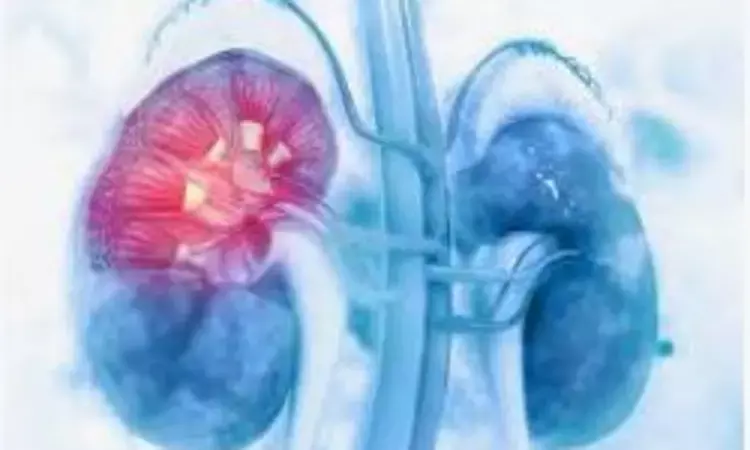- Home
- Medical news & Guidelines
- Anesthesiology
- Cardiology and CTVS
- Critical Care
- Dentistry
- Dermatology
- Diabetes and Endocrinology
- ENT
- Gastroenterology
- Medicine
- Nephrology
- Neurology
- Obstretics-Gynaecology
- Oncology
- Ophthalmology
- Orthopaedics
- Pediatrics-Neonatology
- Psychiatry
- Pulmonology
- Radiology
- Surgery
- Urology
- Laboratory Medicine
- Diet
- Nursing
- Paramedical
- Physiotherapy
- Health news
- Fact Check
- Bone Health Fact Check
- Brain Health Fact Check
- Cancer Related Fact Check
- Child Care Fact Check
- Dental and oral health fact check
- Diabetes and metabolic health fact check
- Diet and Nutrition Fact Check
- Eye and ENT Care Fact Check
- Fitness fact check
- Gut health fact check
- Heart health fact check
- Kidney health fact check
- Medical education fact check
- Men's health fact check
- Respiratory fact check
- Skin and hair care fact check
- Vaccine and Immunization fact check
- Women's health fact check
- AYUSH
- State News
- Andaman and Nicobar Islands
- Andhra Pradesh
- Arunachal Pradesh
- Assam
- Bihar
- Chandigarh
- Chattisgarh
- Dadra and Nagar Haveli
- Daman and Diu
- Delhi
- Goa
- Gujarat
- Haryana
- Himachal Pradesh
- Jammu & Kashmir
- Jharkhand
- Karnataka
- Kerala
- Ladakh
- Lakshadweep
- Madhya Pradesh
- Maharashtra
- Manipur
- Meghalaya
- Mizoram
- Nagaland
- Odisha
- Puducherry
- Punjab
- Rajasthan
- Sikkim
- Tamil Nadu
- Telangana
- Tripura
- Uttar Pradesh
- Uttrakhand
- West Bengal
- Medical Education
- Industry
Diabetic ketoacidosis in kids tied to acute kidney injury; claims study

In a recently published study in PLoS ONE, researchers have pointed out that Acute kidney injury is a common complication in children and adolescents hospitalized for diabetic ketoacidosis.
Previous studies have reported that Children with diabetic ketoacidosis (DKA) experience varying degrees of dehydration and electrolyte imbalance due to osmotic diuresis . Persistent polyuria is the most common symptom in children with DKA and can lead to progressive dehydration . The compensatory mechanism for dehydration in children has not been well established; thus, children are more vulnerable to volume depletion than adults.Inspite of such reports, the prevalence and associated risk factors for AKI in children and adolescents with DKA in the East Asian population have not been reported, and the relationship between recovery time from metabolic acidosis and AKI severity in children with DKA has not been fully established.
With this in view,researchers aimed to identify the prevalence of AKI and to analyze clinical and laboratory markers associated with AKI in children and adolescents hospitalized for DKA and to determine whether an association between AKI severity and recovery time from metabolic acidosis exists during the treatment course of DKA.
For the study design, Medical records of children and adolescents (aged <18 years) presenting with type 1 or type 2 diabetes mellitus and DKA between 2000–2017 at the MacKay Children's Hospital were retrospectively reviewed. AKI was defined by an admission creatinine level >1.5 times the calculated expected baseline creatinine level. Patients were divided into three groups based on AKI severity: no AKI, mild AKI, and severe AKI. In total, 170 (56.5%) patients with DKA presented AKI (mild AKI, 116 [38.5%]; severe AKI, 54 [18.0%]).
Data analysis revealed the following facts.
- Heart rate and laboratory parameters related to dehydration, such as corrected sodium level and blood urea nitrogen, were strongly associated with AKI development (P<0.01).
- Blood pH, plasma glucose, and potassium levels were also associated with AKI. A negative correlation with borderline significance between the estimated glomerular filtration rate (eGFR) and recovery time from metabolic acidosis was observed in the severe AKI group.
- AKI was highly prevalent in children and adolescents with DKA. An association between AKI and biomarkers indicating dehydration was noted.
- The recovery time from metabolic acidosis following treatment may be longer in children with a decreased eGFR who present with severe AKI. AKI is a common complication in children with DKA.
For the full article follow the link: Huang S-K, Huang C-Y, Lin C-H, Cheng B-W, Chiang Y-T, Lee Y-C, et al. (2020) Acute kidney injury is a common complication in children and adolescents hospitalized for diabetic ketoacidosis. PLoS ONE 15(10): e0239160. https://doi.org/10.1371/journal.pone.0239160
Primary source: PLoS ONE
Dr Satabdi Saha (BDS, MDS) is a practicing pediatric dentist with a keen interest in new medical researches and updates. She has completed her BDS from North Bengal Dental College ,Darjeeling. Then she went on to secure an ALL INDIA NEET PG rank and completed her MDS from the first dental college in the country – Dr R. Ahmed Dental College and Hospital. She is currently attached to The Marwari Relief Society Hospital as a consultant along with private practice of 2 years. She has published scientific papers in national and international journals. Her strong passion of sharing knowledge with the medical fraternity has motivated her to be a part of Medical Dialogues.
Dr Kamal Kant Kohli-MBBS, DTCD- a chest specialist with more than 30 years of practice and a flair for writing clinical articles, Dr Kamal Kant Kohli joined Medical Dialogues as a Chief Editor of Medical News. Besides writing articles, as an editor, he proofreads and verifies all the medical content published on Medical Dialogues including those coming from journals, studies,medical conferences,guidelines etc. Email: drkohli@medicaldialogues.in. Contact no. 011-43720751


